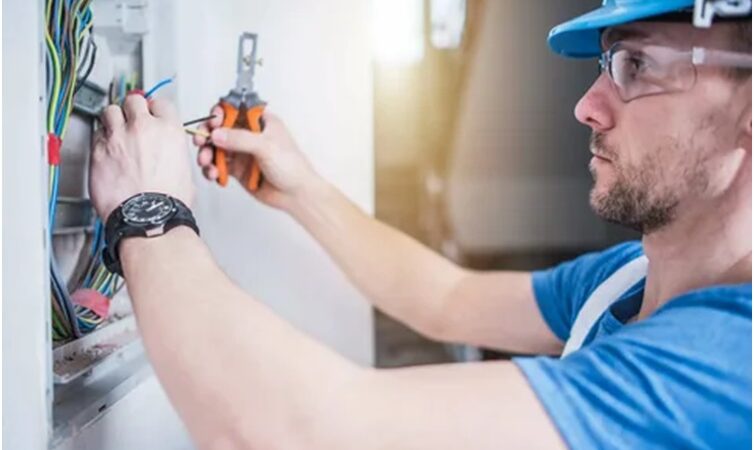Inventory Management in Restaurant Accounting: Best Practices

Effective inventory management stands out as an essential component of financial stability in the dynamic and always-changing world of restaurants, where accuracy and efficiency are the keys to success. Restaurant accounting solutions are essential for assisting eateries in streamlining their operations and keeping control of their inventory. The knowledge of outsourced accounting services often enhances these services. We will go further into the best practices for effective inventory management, a crucial aspect of restaurant accounting, in this thorough book.
Consistent Inventory Counts
Regular physical inventory counts are necessary to maintain control over your restaurant’s inventory. These counts assist in ensuring that the reported stock numbers reflect the actual stock levels appropriately. You may avoid overstocking, cut down on waste, and uncover any instances of theft by quickly spotting differences.
Expert Accounting Services
Accounting specialists may improve your inventory control and simplify your entire financial management by bringing deep expertise, best practices, and cutting-edge software solutions. So, Thinking about hiring specialists in the sector to handle your restaurant accounting services, including inventory management, will be very helpful.
Classify And arrange
The classification and organization of your material is the first step in effective inventory management. Based on their nature and intended use, inventory items should be grouped and arranged to facilitate quick access and tracking. Error probabilities are decreased, and this structure increases overall effectiveness.
Establish Par Levels
For each item in your inventory, set par levels. Par levels are the bare minimum amounts of certain products that must always be on hand. Maintaining par levels makes prompt restocking possible and guarantees that you never run out of vital materials.
Foster Relationships with Vendors
Develop dependable, solid connections with your vendors. The chance of running out of key supplies is decreased when you work with reliable and consistent suppliers that not only guarantee the quality of your ingredients but also make timely delivery.
Use FIFO
First-in, First-Out (FIFO) implementation is recommended for perishable commodities. Using older goods before fresh arrivals is necessary for this. FIFO reduces waste and guarantees that your meals always include the freshest ingredients.
Employee Development
Invest in thorough staff training programs that go through how to handle and record inventory properly. Maintaining correct inventory records requires clear instructions and responsibility from staff members.
Menu Evaluation
Examine your menu often to spot sluggish-moving or unpopular goods. You may modify your menu options to minimize overstocking and food waste by identifying these things.
Strategies For Waste Reduction
Use efficient cooking techniques, portion management, and ingredient recycling or repurposing wherever feasible as effective waste reduction tactics. Your bottom line is immediately impacted by waste reduction.
Successful Vendor Negotiations
Developing effective negotiation skills is essential for obtaining advantageous terms from suppliers, including competitive pricing, flexible delivery schedules, and favorable financing conditions. Effective negotiations may lead to significant reductions in costs.
Tighten Receiving Processes
Create rigorous receiving processes to rigorously examine the correctness and quality of the goods provided by suppliers. Maintaining inventory accuracy depends on spotting errors as soon as they occur.
Usage and Trends Tracking
Continue to keep an eye on usage and trend patterns related to your inventory. You may discover commonly used things using this data, and you can then change your buying habits appropriately.
Price Fluctuation Monitoring
Keep an eye out for changes in component prices. To efficiently control expenses, outsource accounting services and modify your pricing or sourcing strategy as necessary.
Calculate Inventory Turnover Rate
This will allow you to assess how rapidly your restaurant is selling its merchandise. An increased turnover rate is a sign of effective inventory control.
Scheduled Reordering
Implement a systematic reordering procedure based on past use data and par levels. Make sure to make last-minute, urgent changes to your purchase since this might cause problems for your business.
Regular Auditing and Checks
Run internal audits and checks on a regular basis to make sure your inventory records are accurate. These tests aid in spotting errors so they may be quickly fixed.
The Conclusion
Successful inventory management is essential for the restaurant sector. Adopting the best practices listed above, along with assistance from restaurant accounting solutions and outsourced accounting services, will help you keep careful control over your inventory, whether you own a modest cafe or oversee a busy restaurant chain. This not only lowers waste and expenses but also guarantees that you constantly provide your clients with food of the highest quality.
You can simplify your restaurant’s operations, increase profitability, and concentrate on what you do best—providing excellent dining experiences—by putting these best practices into effect and making use of the knowledge of accounting experts. Creating a formula for long-term success in the food industry is what optimal inventory management is all about—it’s not just about the ingredients.





